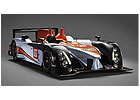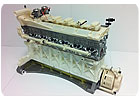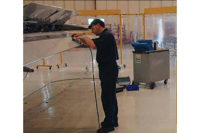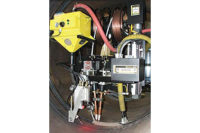
Three-dimensional printing of prototypes helped Aston Martin Racing build its AMR-One race car in less than six months so the car could enter the 2011 Intercontinental Le Mans Cup. Photo courtesy Aston Martin Racing
Plastic prototypes needed to be created quickly and on-site throughout Aston Martin’s design and build schedule, which was less than six months, from autumn 2010 to the end of February 2011. Fortunately, a few months prior Aston Martin had seen Prodrive use a 3D printer to produce prototype parts for one of its rally teams.
Aston Martin and Prodrive are joint partners of Aston Martin Racing (AMR), which was created in 2004 specifically to design, build and race production-based sports cars in events and championships around the world. The team’s first race was the opening round of the American Le Mans Series at Sebring in 2005, where it scored a GT1 class victory.

AMR used the 3D printer primarily to design and test engine parts of the AMR-One, as well as mock up the custom carbon fiber chassis and driver controls. Photo courtesy Aston Martin Racing
AMR used the 3D printer primarily to design and test engine parts of the AMR-One, as well as mock up custom carbon fiber chassis and driver controls. Prototypes created with the printer helped AMR design the AMR-One so it met the 2011 design regulations of Automobile Club de l’Ouest, the Le Mans Cup governing body.
“When we received final sign-off to build the car for this year’s ILMC, using rapid prototyping was a no-brainer for us, as we had a tight deadline to meet,” says George Howard-Chappell, AMR technical director. “The Dimension machine also proved very useful for the early stages of determining the driver fit for the car.”
Following the success with the AMR-One, Howard-Chappell says AMR is considering using the 3D printer to make finished parts to bolt onto the car. One item being considered is the front wing splitters used for aerodynamic flow. AMR also hopes to use another 3D printer to help build and deliver end-use parts for future sports cars.
Since 1914, Aston Martin has created some of the world’s most iconic sports cars, such as the Vantage, Vantage S, DB9, DBS, Rapide, One-77, Virage and the DB5.
For more information on 3D printing, call 800-937-3010 or visit www.stratasys.com.





